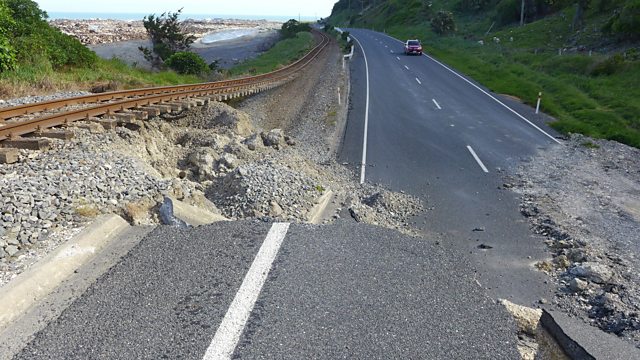Most Complicated Earthquake Ever Observed
Satellite data reveals the complexity of New Zealand’s 2016 earthquake. Also, seasonal changes on comet 67P, navigating London’s roads from an fMRI scanner
On 14th November 2016, the South Island of New Zealand was struck by a major 7.8 magnitude earthquake. Satellite data and field data reveals that this earthquake is one of the most complex ever recorded. The earthquake spanned a huge 170km and ruptured faults that we didn’t even know existed - at least 12 faults ruptured during the 2 minute quake. This new knowledge of this complex earthquake challenges many previous assumptions about how earthquakes propagate - seismic hazard models will need to be corrected.
Seasonal Changes on Comet 67P
Comet Churymov-Gerasimenko 67P is famous for being the first comet to be reached by probes, with the landing of Rosetta’s Philae probe taking place in 2014. During Rosetta’s orbit and Philae’s time on the surface of the comet, a lot of photos were taken – famously revealing the duck-shape of the comet. But the photos have also given an insight into the changes that take place on the comet’s surface during its orbit around the sun. Cliff collapses, ripples caused by wind and retreating rock faces have all been observed and it appears that being closer to the sun accelerates these surface changes.
Navigating London’s Roads from an fMRI Scanner
In a clever experiment in which participants navigated through virtual busy London streets whilst in an fMRI scanner. Researchers pinpointed the parts of the brain involved in finding your way. If you rely on your sat nav, you may be surprised to hear that your hippocampus is almost entirely inactive. If you’re navigating without a sat nav, the more options you have at each junction, the more active your hippocampus is. But when faced with a detour, it’s your prefrontal cortex that takes control.
Social Networking for Japanese Macaques
Many of us spend a lot of time on social networks, allowing us to interact within our social circles. Our primate relatives may not have Facebook but they too move in social circles. For Japanese Macaques, these social circles dictate who grooms who and who catches fleas from whom. New research ties in these monkeys’ social networks with the spread of diseases and parasites. The findings could also be applied to the spread of disease in humans.
Image: The Papatea fault cutting through State Highway 1 and main rail line. © Julian Thomson
Presenter: Adam Hart
Producer: Fiona Roberts
Last on
More episodes
Clip
-
![]()
Monkey Facebook
Duration: 00:42
Broadcasts
- Thu 23 Mar 2017 19:32GMT���˿��� World Service East and Southern Africa & West and Central Africa only
- Thu 23 Mar 2017 20:32GMT���˿��� World Service Online, Americas and the Caribbean, Australasia, Europe and the Middle East & UK DAB/Freeview only
- Thu 23 Mar 2017 21:32GMT���˿��� World Service East Asia & South Asia only
- Fri 24 Mar 2017 02:32GMT���˿��� World Service Americas and the Caribbean
- Fri 24 Mar 2017 03:32GMT���˿��� World Service Online, Europe and the Middle East & UK DAB/Freeview only
- Fri 24 Mar 2017 04:32GMT���˿��� World Service East Asia & South Asia only
- Fri 24 Mar 2017 05:32GMT���˿��� World Service Australasia
- Fri 24 Mar 2017 07:32GMT���˿��� World Service East and Southern Africa & Europe and the Middle East only
- Sun 26 Mar 2017 00:32GMT���˿��� World Service except Americas and the Caribbean & News Internet
Podcast
-
![]()
Science In Action
The ���˿��� brings you all the week's science news.



